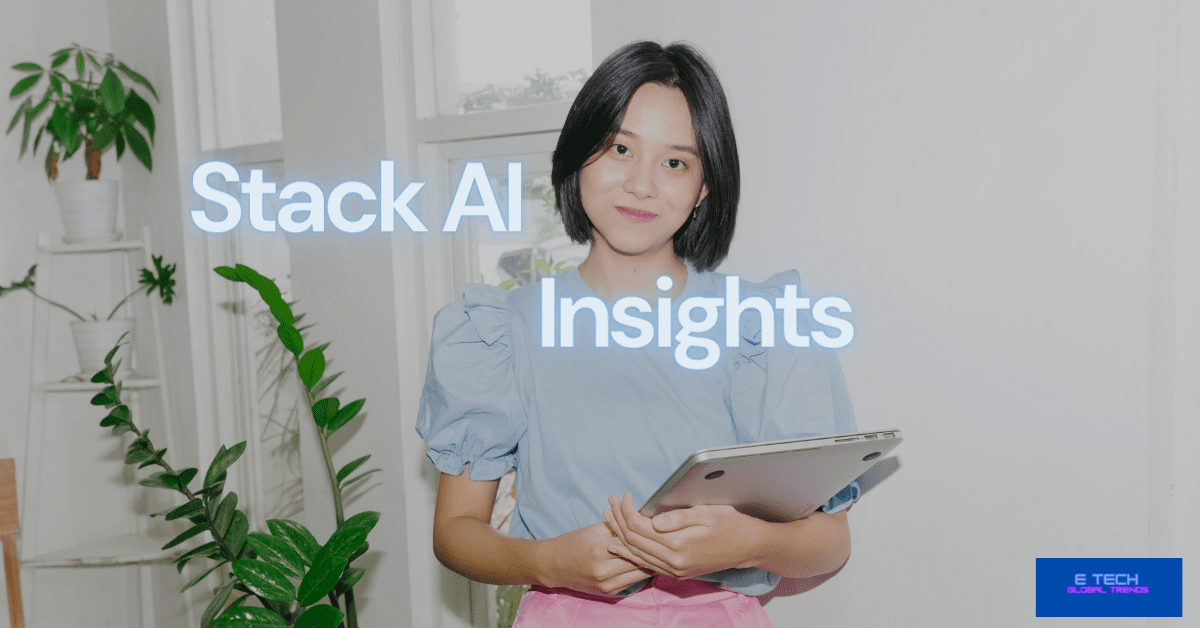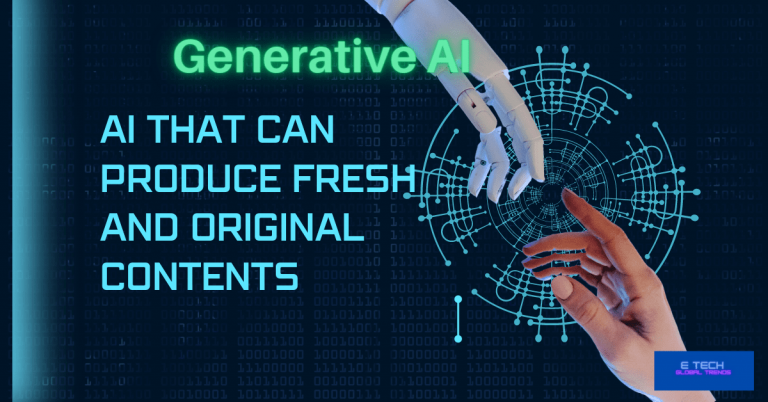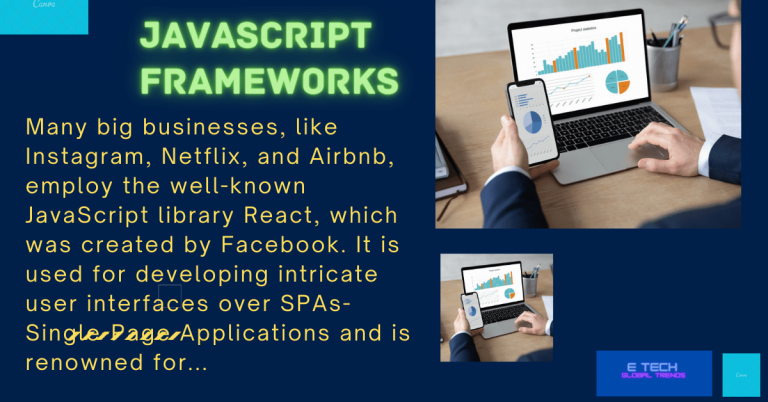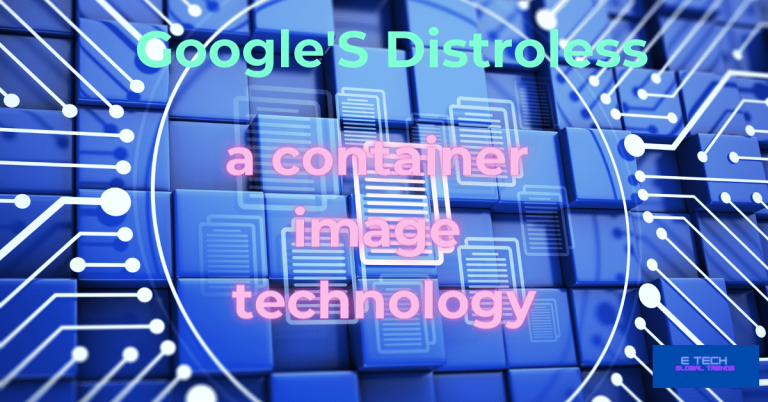Stack AI
Hey. do you know that AI app development without coding is possible using Stack AI? The purpose is to assist companies in integrating LLMs with their current software.
There are a few ways to do so. An LLM could get integrated into a business’s Chatbot, for instance, using Stack AI.
Over 100 firms use Stack AI, according to the Startup. $500K has been raised for Stack AI. The market for Generative AI technologies intended for business use is expanding. Over the previous 24 months, the number of searches for “enterprise generative AI” increased by 2K%.
What is Enterprise Generative AI?
Generative AI models are applying now in businesses and organizations; this is what we say Enterprise Generative AI.
Based on the data that they can train on, these models can produce new text, code, photos, videos, and even designs. This gives businesses more opportunities to automate, innovate, and increase productivity.
The following are some important aspects of enterprise generative AI:
- Produces fresh, original material in a range of media, such as text, code, pictures, videos, and designs.
- produces scripts, reports, marketing text, and other materials to automate processes.
- Adapts information to suit various contexts and audiences.
- Finds patterns in data analysis to produce insights and forecasts.
- Investigate design options to create new goods and services.
How does Enterprise Generative AI relate to Stack AI?
While both Enterprise Generative AI & Stack AI are strategies for integrating AI technologies into an enterprise, their methods and areas of emphasis are different.
*AI systems created to produce text, graphics, or code in an enterprise setting are referred to as “enterprise generative AI” systems.
These systems are frequently customized to meet certain company requirements, such as helping with product creation, automating report generation, or producing personalized information for consumers.
The goal of enterprise generative AI is to use AI technology to improve an organization’s efficiency, creativity, and production.
*Conversely, stack AI is the idea of combining several AI technologies within a single, coherent “stack” or ecosystem.
- An organization’s operations,
- including data analysis,
- customer support,
- decision-making, and
- automation,
are addressed by this stack, which typically consists of a variety of AI models, tools, & frameworks.
Building a thorough AI infrastructure to support the objectives and procedures of the company is the main focus of Stack AI.
To put it simply, Enterprise Generative AI is a single feature or part of a larger Stack AI architecture.
The goal of stack AI is to build an integrated AI ecosystem that is suited to the requirements of the business. It includes a wider variety of AI applications & technology than only generative capabilities.
How does a business benefit?
1.0 Enhanced efficiency and productivity:
Automating monotonous jobs frees up workers’ time so they may concentrate on more strategic activities.
2.0 Increased inventiveness and creativity:
creates new opportunities for marketing, content production, and product development.
3.0 Enhanced customer experience:
Increases satisfaction and engagement by personalizing interactions and content.
4.0 Data-driven understandings:
finds hidden trends and patterns in data to help with decision-making.
5.0 Advantage over competitors:
provides state-of-the-art features that set companies apart from their rivals.
Obstacles and things to think about:
1.0 Data bias and quality:
To prevent biased results, high-quality training data is necessary.
2.0 Explainability and control of the model:
For responsible use, it is essential to comprehend how models produce outputs.
Ensuring that generated content is both secure and compliant with privacy standards.
3.0 Ethical Considerations:
It is important to address the possibility of misuse, biases, and unforeseen effects.
A potent technology that has the potential to have a big impact on a lot of different areas of corporate operations is enterprise-generative AI.
We should expect the technology to become much more broadly embraced and revolutionize the way businesses operate as it evolves and obstacles are addressed.
The following are some popular platforms in this field:
Digital twins of a company’s customer base can be produced by Native AI.
The main purpose of the text-to-speech platform WellSaid Labs is to produce compliance and training videos.
A business use case NLP model library is one type of AI. Text, audio, & videos are possible to analyze with the platform and turn into data.
What is stack AI?
AI solutions integrated throughout the software development stack, including the front-end user interface to the back-end infrastructure, are referred to as full-stack AI. (check here for how to become a full-stack developer)
AI modeling, algorithms, & systems that manage different activities and processes inside an application or system are all included in its development and implementation.
An engineer or developer who specializes in full-stack AI usually has a wide range of skills,
Including…
1.0 Data Preparation and Collection:
This stage entails compiling pertinent data from multiple sources and getting it ready for modeling and analysis.
2.0 Machine Learning & Deep Learning:
To derive insights from data, forecast future events, or carry out other activities, full-stack AI developers have expertise in creating and executing machine learning along with deep learning algorithms.
They are proficient in both model evaluation and training, utilizing relevant metrics to assess the performance of the models based on the given job and suitable datasets.
3.0 Backend Development:
The creation of backend technologies and APIs that facilitate the deployment and incorporation of AI models within services and apps is a skill that full-stack AI engineers possess.
4.0 Frontend Development:
They are capable of creating frontend components and user interfaces that work in tandem with AI-powered capabilities and features to offer a smooth user experience.
5.0 Deployment & Scaling:
They know how to scale AI models to effectively manage various workloads and deploy them in production situations.
6.0 Monitoring and Maintenance:
Assisting with problems as they emerge, keeping an eye on the effectiveness of deployed models, and gradually refining the AI system are the duties of full-stack developers.
Full-stack AI developers are generally highly qualified to create comprehensive AI solutions that satisfy the tasks. They demand certain applications or domains since they possess knowledge of every step of the AI creation and implementation process.
They are essential in bridging the knowledge gap between AI development and real-world applications, spurring innovation and technological growth in AI-powered fields.
what AI solution is the best to integrate throughout the software development stack?
The complete software development stack cannot be easily integrated by a single “best” AI solution.
The development environment, project objectives, and your unique needs all play a major role in selecting the “best” option.
however, we can provide some advice on selecting the appropriate AI tools for the various components of your stack:
Such as;
1. Collecting and designing requirements:
Tools for NLP (Natural Language Processing)
These can assist you in understanding user demands and producing initial design concepts by analyzing market trends, user feedback, and existing documentation.
Examples are;
- Google AI Framework NLP
- Amazon Comprehend.
2. Progress:
AI-powered technologies can automate repetitive coding processes and provide context-based code completion suggestions.
Examples are;
- Tabnine and
- GitHub Copilot.
*Static code analysis
Deepcode AI-powered platforms like Snyk may detect possible faults and weaknesses in code, enhancing security and quality.
*Automated testing:
To save time and effort, tools such as Testsigma use artificial intelligence (AI) to automate tests.
3. Monitoring and deployment:
Anomaly detection: AI is capable of examining performance measurements and application logs to find possible problems before they affect users.
Examples are;
- Dynatrace and
- Datadog.
Chatbots & virtual assistants: By assisting users with basic inquiries and troubleshooting, these tools lighten the load on support staff.
4.0 Other things to think about:
*Ease of integration: Make sure your current tools and workflows are seamlessly integrated with the solution you have selected.
*Scalability: Select a system that can grow with your needs as they change for development.
*Data security and privacy: Take proper security precautions and pay attention to data privacy laws.
Consider using a variety of AI technologies that are suited to your unique requirements rather than settling on a single “best” option.
Examine and contrast several choices according to their features and suitability for your development environment.
Recall that while AI is an effective tool, it is not a miracle cure. To reach its maximum potential in your software development process;
- Meticulous planning,
- Integration, and
- Human monitoring
are necessary.
What are the examples of stack AI tasks?
These are a handful of uses.
An AI assistant that functions as a co-pilot for sales representatives
It can assist them by proposing talking points, spotting possible objections, and suggesting actions to take during dialogues.
An automated agent for customer service:
This chatbot answers common queries, fixes easy problems, and refers complicated queries to real people.
As a Content creation tool
Utilizing certain needs and data insights, this artificial intelligence platform assists writers and marketers in creating blog posts, social media content, and various other marketing materials.
Learning Assistant
An individualized educational helper By customizing learning resources and recommendations for each learner, this AI improves learning outcomes.
By the way …
Are there any alternatives other than Stack AI?
Of course yes,
There are numerous alternatives to Stack AI and each contains advantages and disadvantages of its own.
Your unique needs and financial situation will determine which option is best for you. Listed below are some of the most well-liked choices:
1.0 Google AI Studio:
This development environment gives you access to and functionality with Google’s artificial intelligence models. If you’re searching for a strong tool with a large selection of models, this is a fantastic choice.
2.0 Cameralyze:
This artificial intelligence platform focuses on the analysis of images and videos. If you want a tool to assist with the analysis of visual content, this one is a good choice.
3.0 AI widgets
AI Widjets is from InteraxAI and is available for integration into your app or website without the need for any programming knowledge.
If you’re searching for a simple approach to incorporate AI capabilities into your current goods, this is an excellent choice.
4.0 Encord
This is an artificial intelligence platform with a focus on natural language processing. It’s a decent choice if you’re trying to find a tool for text comprehension and processing.
5.0 C3 AI Suite:
This feature-rich enterprise-grade AI platform is called C3 AI Suite.
For big AI projects, it’s a good choice if you’re searching for a strong tool.
6.0 Obviously AI:
This AI platform focuses on producing creative text formats, such as screenplays, emails, letters, poems, code, and music. If you’re searching for a tool to aid in the creation of creative material, this is a wonderful choice.
7.0 Levity:
With this no-code platform, you can build unique artificial intelligence models to automate processes. This is a viable choice for anyone seeking a user-friendly instrument that doesn’t necessitate any prior understanding of coding.
These are but a handful of the several options for Stack AI that are out there.
Make sure to take your budget and unique needs into account while selecting an option.
Final thoughts for Stack AI Insights
Uncovering Stack AI Insights: Unleashing Data Science’s Power!
We explore Stack AI Information, a ground-breaking platform that is revolutionizing the field of data science, in our most recent blog post.
With its innovative blend of sophisticated analytics and user-friendly interfaces, this tool provides unmatched insights into intricate datasets.
With the use of cutting-edge machine learning algorithms, Stack AI Insights can sort through enormous volumes of data and identify significant patterns and trends.
This technology gives organizations the ability to confidently make educated decisions through sentiment analysis and predictive analytics.
The intuitive interface of Stack AI Insights, which is intended to serve both data scientists & business executives, is one of its primary strengths.
Users can easily analyze data and receive critical insights at every step with configurable dashboards and interactive visualizations.
Stack AI Insights
Furthermore, Stack AI Insights promises a smooth connection with current procedures, facilitating improved teamwork.
Whether it’s streamlining product offerings or optimizing marketing strategies, this platform gives businesses the tools they need to stay competitive in today’s data-driven market.
Summary
To sum up, Stack AI Insights is a paradigm change in data science that will enable organizations to fully utilize their data by democratizing access to sophisticated analytics. With its powerful capabilities and user-friendly layout, this platform has the potential to completely change how we use data to achieve success.
Hope this content helps.
Cheers!
Read more on related topics here; Generative AI, Best AI Tools 2024







